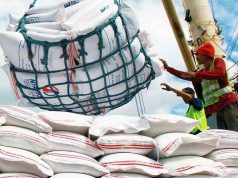OUTSTANDING external debt dropped by 2.6% quarter-on-quarter as of March and remained at a manageable level despite the current coronavirus pandemic.
The country’s external debt was at $81.4 billion as of end-March, decreasing by 2.6% or by $2.2 billion compared to the $83.6 billion as of end-December 2019, Bangko Sentral ng Pilipinas (BSP) said in a statement on Friday.
“The decline in the debt level during the first quarter was due to net repayments of $4 billion largely attributed to the settlement of short-term maturing obligations by the private sector,” the BSP said.
On the other hand, the debt stock rose by $990 million from end-March 2019.
“Although net repayments amounted to $2.2 billion largely by private sector banks short-term accounts, this was more than offset by the following: (a) transfer of Philippine debt papers from residents to non-residents ($2.4 billion); (b) prior periods’ adjustments ($482 million); and (c) positive FX adjustments ($266 million),” the central bank said.
External debt refers to all types of borrowings by residents from non-residents, following the residency standards for international statistics.
Meanwhile, the debt service ratio, which relates principal interest payments to exports of goods and receipts from services and primary income and measures adequacy of foreign exchange earnings to meet due obligations, increased to 8.9% from 5.7% a year ago due to higher payments.
On the other hand, the external debt to gross domestic product (GDP) ratio, a solvency indicator, improved to 21.4% from 22.2%.
“The ratio indicates the country’s sustained strong position to service foreign borrowings in the medium to long-term,” the BSP said, noting the country’s external debt-to-GDP ratio is among the lowest in ASEAN countries.
ING Bank NV-Manila Senior Economist Nicholas Antonio T. Mapa said the current external debt stock is reflective of the current crisis.
“Maturity of some issuances and prepayments may have led to the lower debt stock while weaker GDP may have led also to the lower debt to GDP ratio,” he said in an email.
The economy contracted by 0.2% in the first quarter, dragged by the impact of the virus outbreak and the Taal volcano eruption.
Foreign debt with tenors longer than a year comprised 83.6% of the total debt stock. The remaining 16.4% had maturities of up to one year, consisting mostly of bank liabilities, trade credits and others.
The BSP said the weighted average maturity for all medium- to long-term accounts slightly rose to 16.9 years from 16.7 years in the previous quarter, with public sector borrowings having a longer average term of 20.9 years compared to 7.4 years for the private sector.
“This means that foreign exchange requirements for debt payments are well spread out and, thus, more manageable,” the BSP said.
Public sector external debt grew by 5.37% to $45.1 billion in the first quarter from the $42.8 billion in the previous quarter. Of this total, $38.3 billion were national government borrowings while $6.8 billions were loans of government-owned and -controlled corporations, government financial institutions and the BSP.
Meanwhile, the debt stock of the private sector dropped 11.02% to $36.3 billion in the first quarter from the $40.8 billion as of end-December 2019, mainly on the back of net repayments worth $4.9 billion, mostly by banks.
The top creditors during the quarter were Japan ($14.9 billion), the United States ($3.6 billion), The Netherlands ($3.3 billion), and the United Kingdom ($3.2 billion).
Multilateral and bilateral credits had the largest share (33.6%) of total outstanding debt, followed by foreign holders of bonds and notes (31.6%).
Meanwhile, obligations to foreign banks and other financial institutions made up 28.9% of the total, while the rest (5.9%) were owed to other creditor types, mainly suppliers or exporters.
The BSP said the debt stock remained mostly in dollars (55.7%) and in yen (13.4%). World Bank and Asian Development Bank loans which are in dollars made up 17.4% of the total debt stock.
Moving forward, analysts said external dept is likely to see an uptrend but remain manageable during this crisis.
“Despite the slight uptick in borrowing we still expect debt levels and metrics to remain broadly manageable,” ING’s Mr. Mapa said.
“We also note that the Philippine financial market is currently flush with liquidity and borrowing costs floored by BSP easing, opening up the avenue for local borrowing as an alternative to foreign debt,” he added.
The debt stock could rise in the coming quarters “after the government increased spending for COVID-19 (coronavirus disease 2019) programs and for financial assistance to aid the most vulnerable sectors”, said Rizal Commercial Banking Corp. Chief Economist Michael L. Ricafort.
“The country’s external debt could also go up in the coming months as more local companies also borrow from overseas (such as PLDT and Jollibee recently) as relatively low interest rates in the US and in many countries make borrowings more attractive,” he added.
On the other hand, Mr. Ricafort said the government may be more cautious of foreign exchange risks that come with foreign borrowings, “learning from the lessons of the Asian Financial Crisis in 2019”, which could result in a preference for the local market. — Luz Wendy T. Noble



